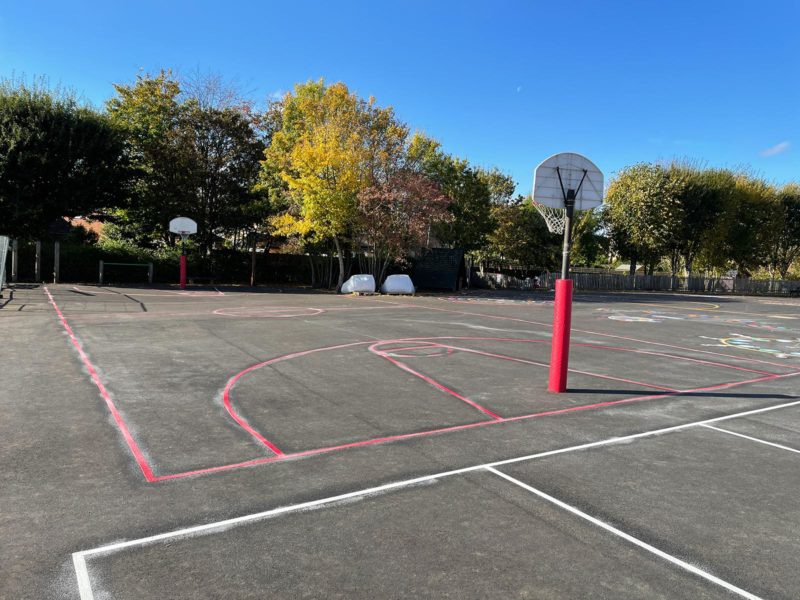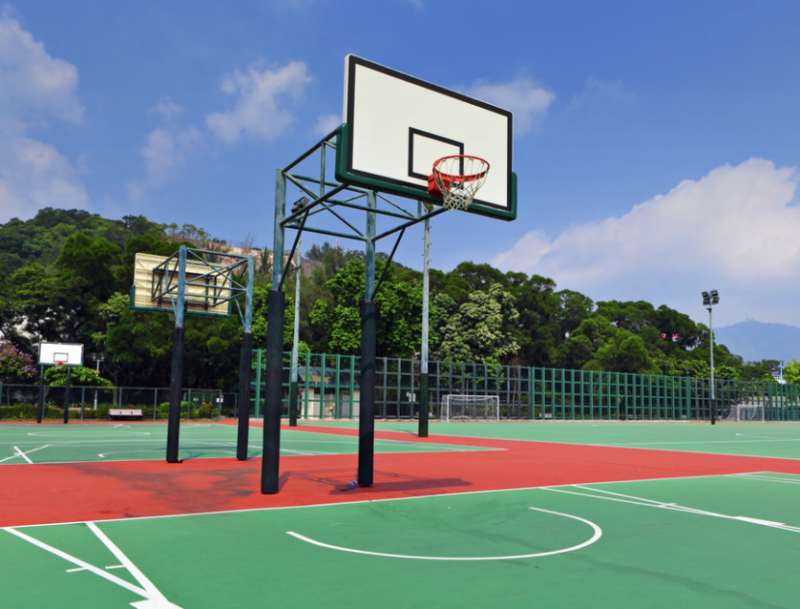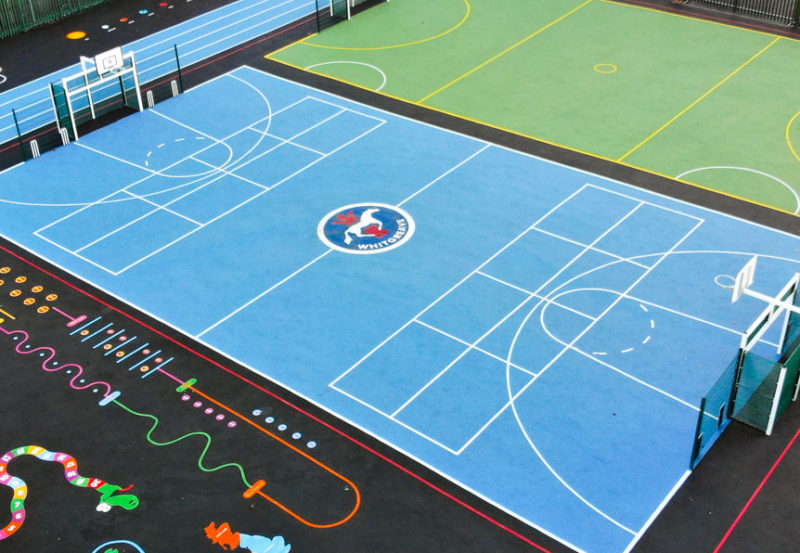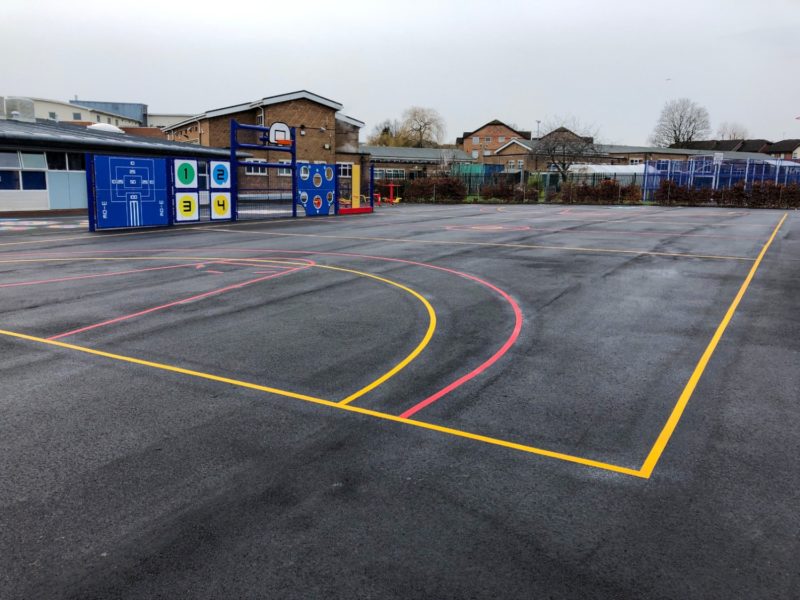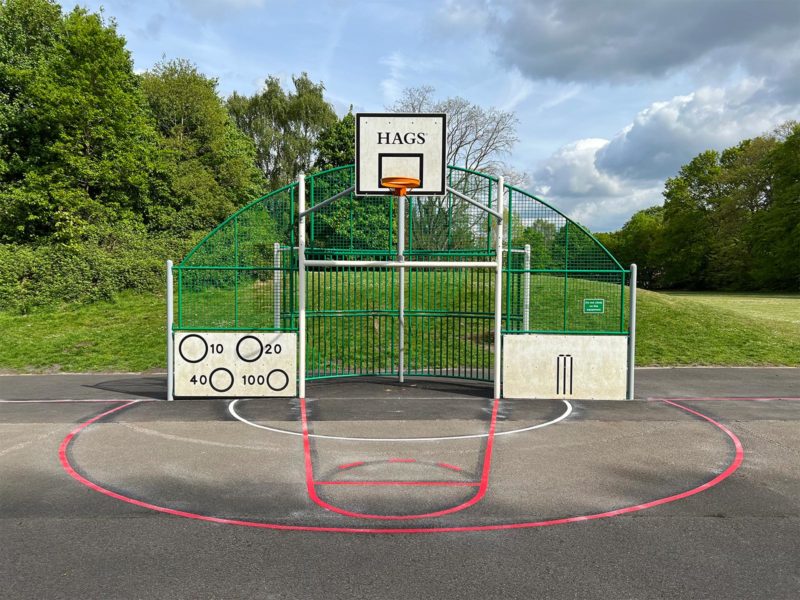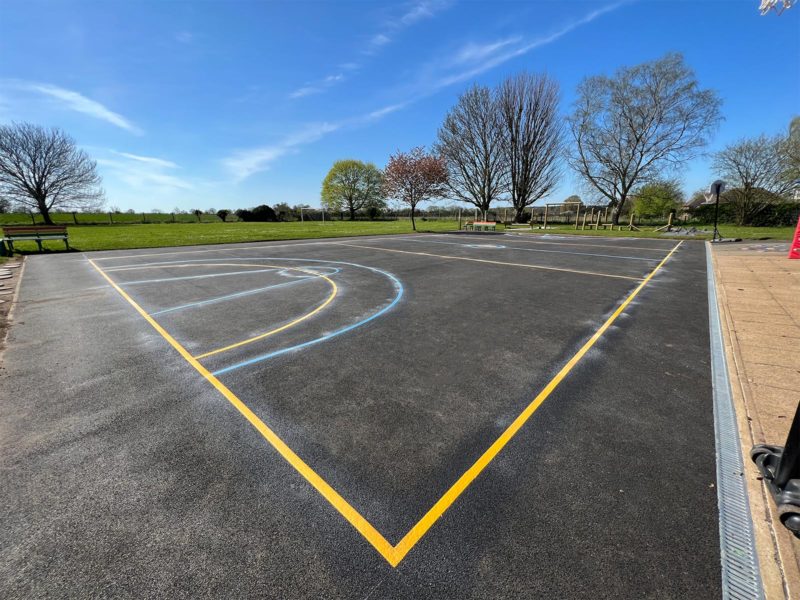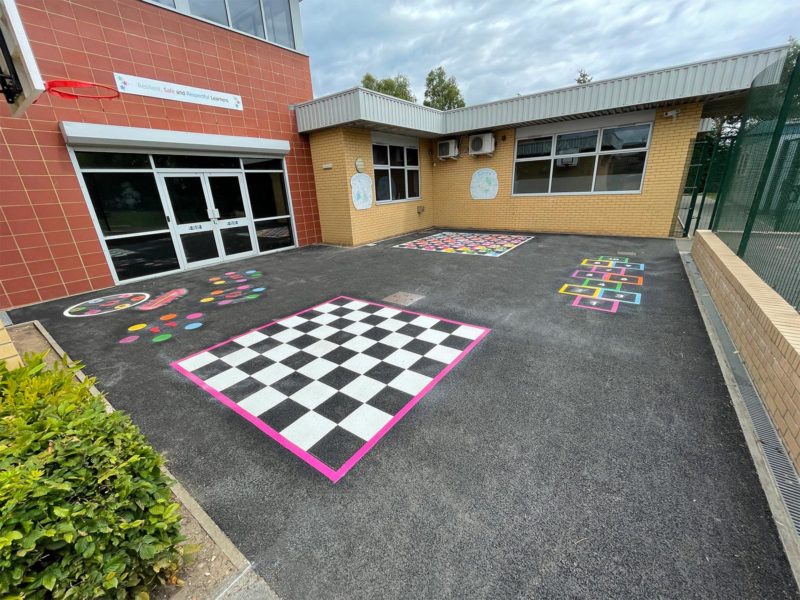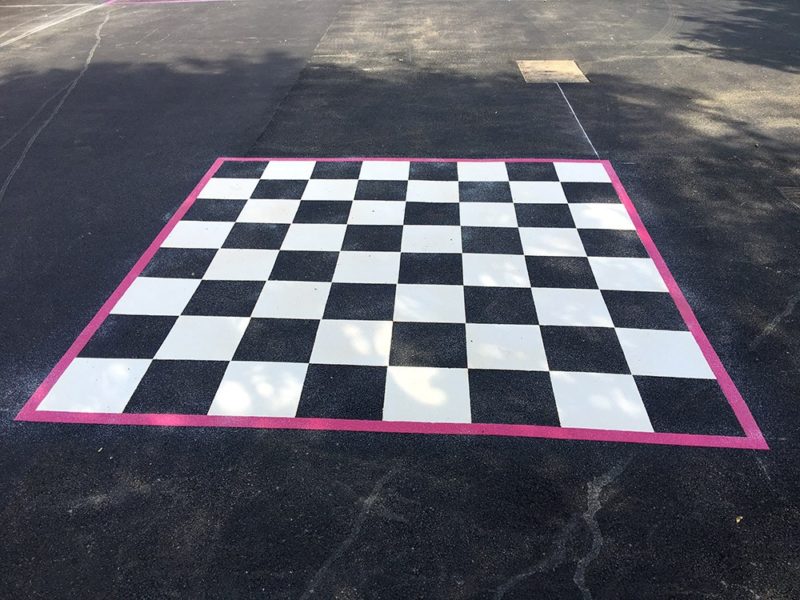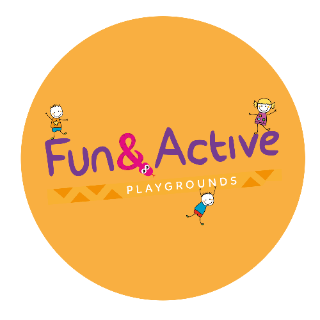Target playground markings are the perfect resource to develop your pupils’ hand-eye coordination. But why stop there when you can use them for much more?
In this blog, we will give you some great ideas for games that you can play and learn with our target playground markings which will make break times, and even lessons, much more engaging, active, and educational for your children.
Bullseye
This game is super simple and yet tons of fun. To set up your own game of Bullseye, you will need to draw four or more circles – starting with one in the middle and following up with another around it and so on.
Bullseye can be played with two or more players, but larger groups offer the possibility of forming teams, which makes the game more social and enjoyable. The goal is to throw an object, like a beanbag, and try to hit the Bullseye, grabbing the maximum number of points for your attempt.
Set up your scoring rules with each circle awarding more points the closer they are to the centre (the bullseye), which awards the highest number of points. Each participant should throw the same type of object as the others to make it fair.
To make this game more interesting, each player can get multiple objects that they need to throw, each of them differing in weight and size. This will make every attempt more unique and the game more interesting. Additionally, adding more circles will make for a more diverse score which is a fantastic way to teach maths, too!
A great playground marking to use for this game is our 2-Way Solid Target with bright and bold colours for each circle.
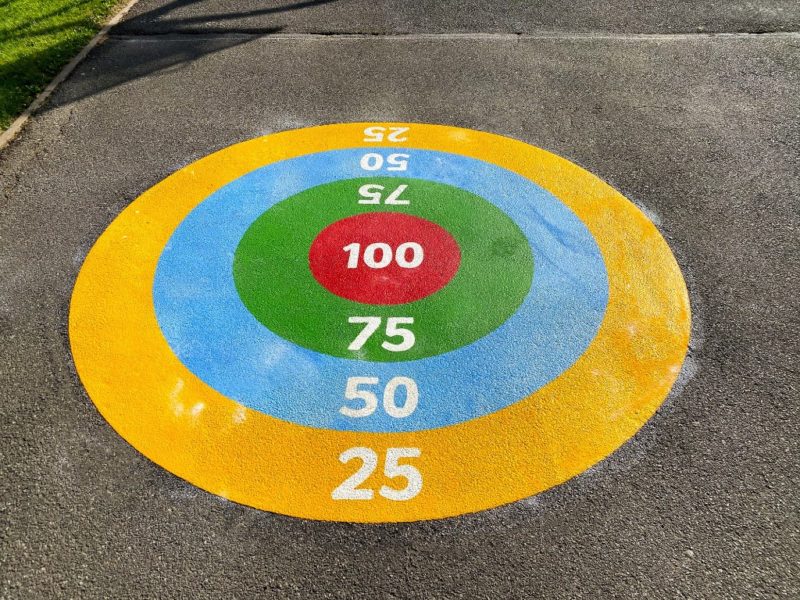
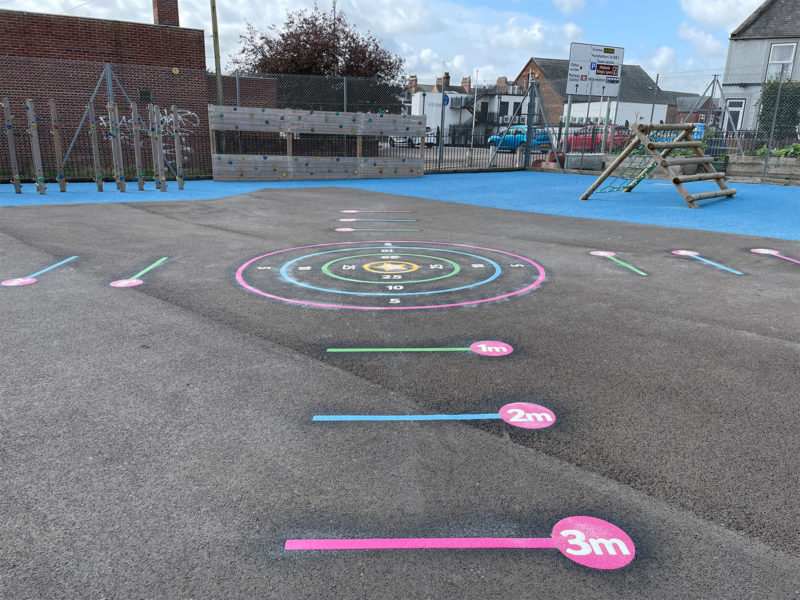
Darts on the Playground
Use a beanbag or a stone to mark the throws instead of darts. Even with the twist of not using darts, playing this fun game on the playground will surely bring smiles to the faces of your infant and primary school children!
Choose a variation of darts that you want to play. There are a multitude of games for you to pick from including 301, 501, and 701, which are all a race to 0. Round the world will have participants race to hit all numbers from 1 – 20 in order and the first one to do so is the winner. Make sure to check out popular darts variations to find the best fit or simply try them all.
Play with two or more players to maximise the fun or easily play this game in teams. Make sure to check out our durable dartboard playground marking, for a more permanent solution for your playground!
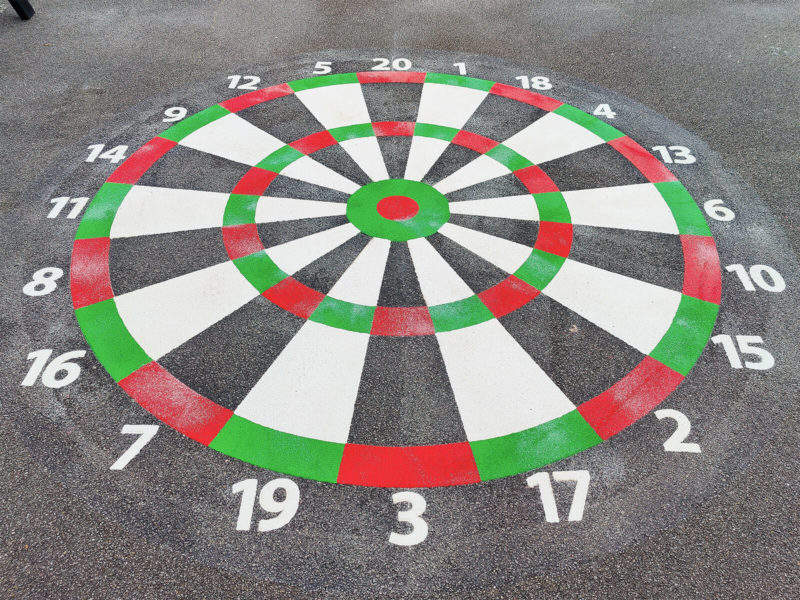
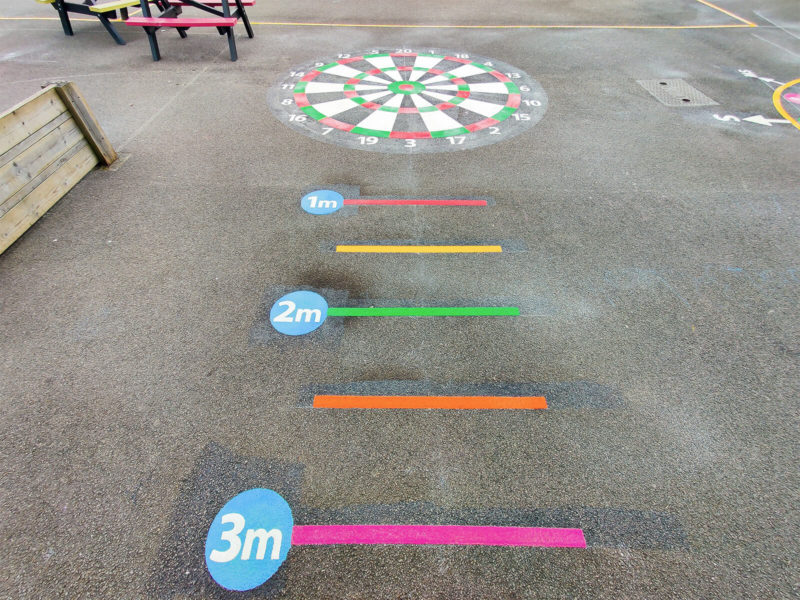
21
Another fun game that you can play with a friend, or a group, is 21. You will need to draw three lines, which will mark the spots from which you will be throwing. The first line should be closer to the target area and each line after that should be further from the others.
The closest line will give you the number of points you scored, without multiplying them, while the rest of the lines multiply your score depending on the order from the target area. For example, if you are throwing 4 lines away from the target area, your score will be multiplied by 4.
As for the target area, it can be in any shape you want. Mark as many areas within it, each awarding a different number of points. Keeping the areas awarding a lower number of points will help prolong the game, while higher point awards can make for more fun due to the potential of more mistakes! The goal is to reach a score of 21 without going over. If you score more than 21, your score gets restarted, and your opponents get to catch up to you.
Our solid target with throwing lines playground marking is the perfect marking for this game!
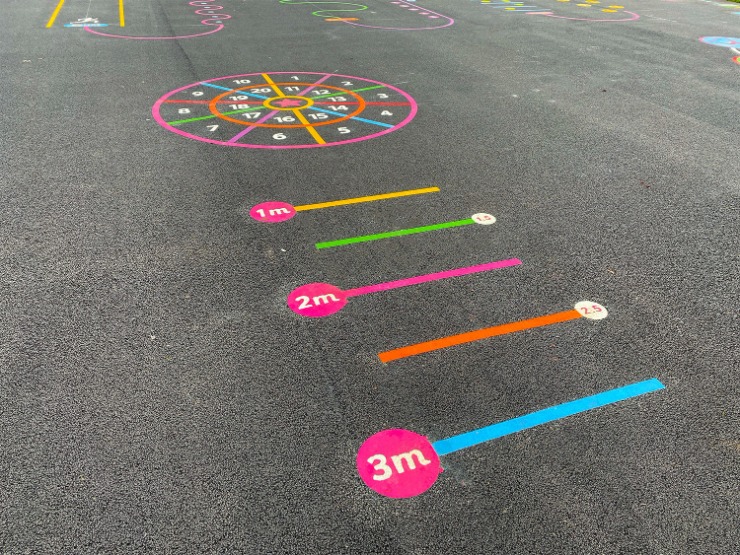
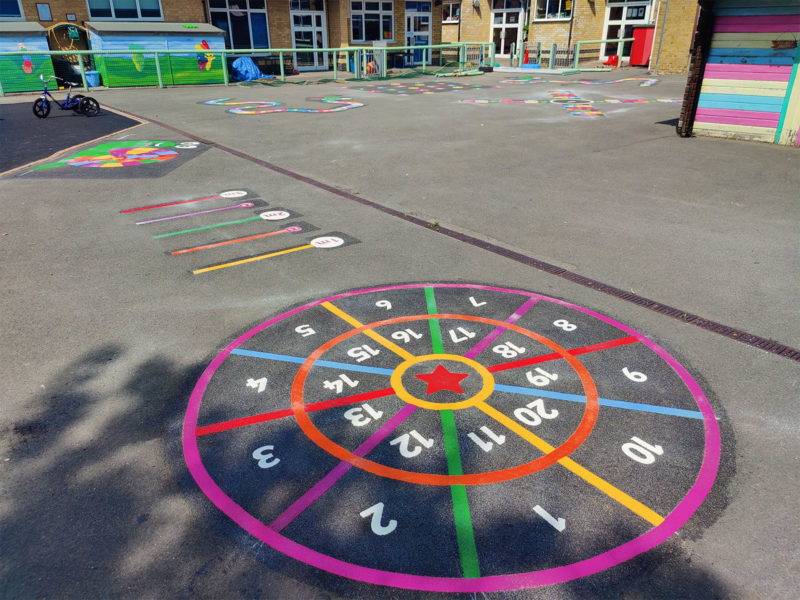
Maths Showdown
Target playground markings are super fun and a seamless way to perfect maths skills, learning how to divide, multiply, add, and subtract.
Draw a circle on the ground and split the inside of it into 10 equal sections, with the lines going towards the centre of the circle. Mark each section with the numbers 1-10 on the outer side of the circle. Then divide each section into 4 more sections by drawing inner circles, starting with a plus for the outermost section, then minus, multiply and divide for the one closest to the centre. You could also use one of our fantastic maths target playground markings too!
Split your pupils in two or more equal teams. Each turn, you will call out a starting number and have a member of one team throw a beanbag onto the markings. This will determine the other number and the sign for the equation. Have the other team then discuss the equation and come up with the answer for it. Reverse the roles for the next turn.
This can be an amazing way for a class to study maths as they can exchange thoughts and help each other out. With an accurate throw, they can also challenge the other team with a tough equation for maximum fun.
You could even make this game more competitive by having just one person solve the equation in each round, giving a point to their team if they do and vice versa.
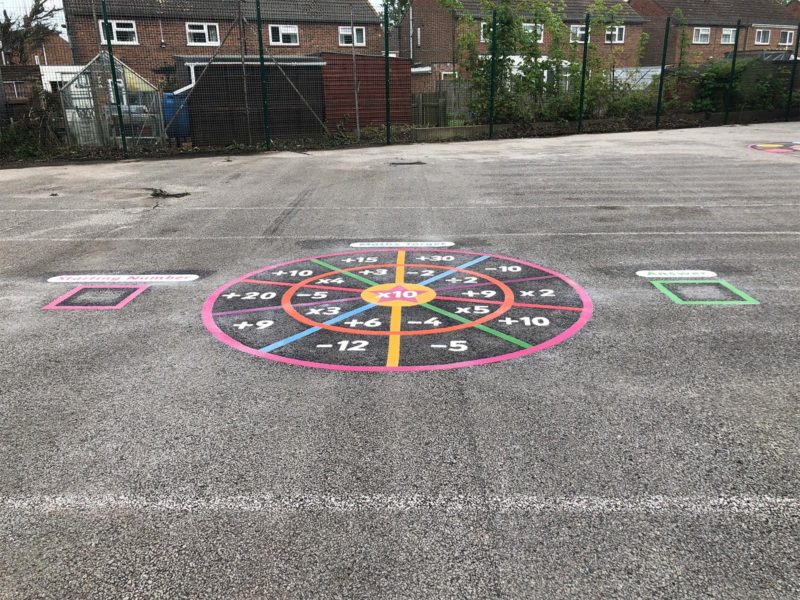
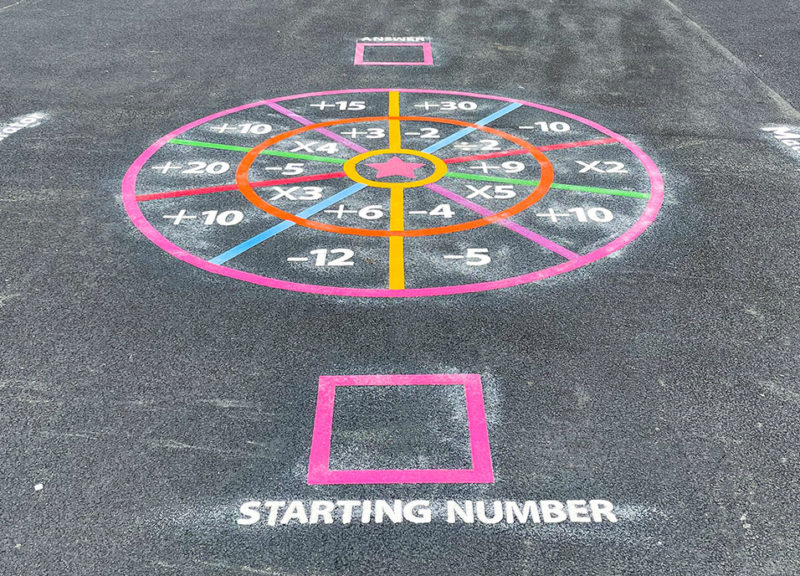
Education and fun go hand in hand with our vibrant thermoplastic target playground markings. If you would love your pupils to enjoy plenty of fun play and learning on your playground, check out our wide variety of top quality playground markings and give our friendly team a call!
